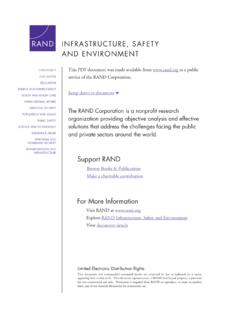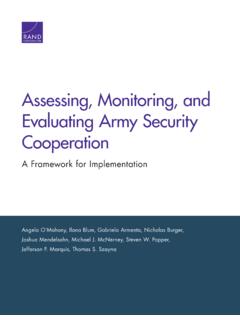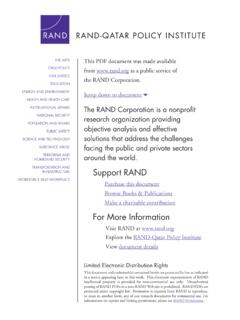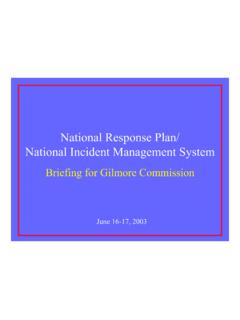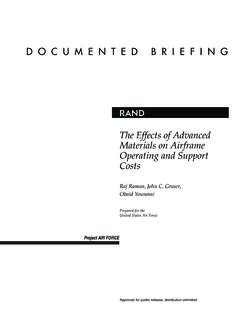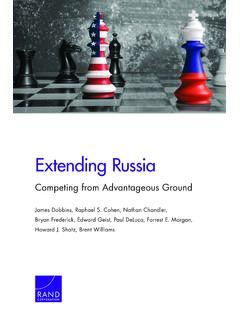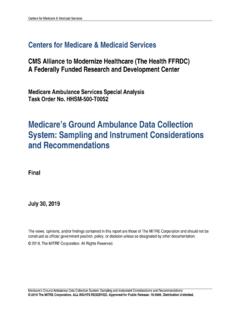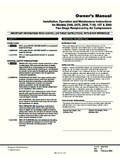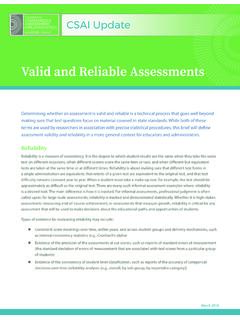Transcription of War with China - RAND Corporation
1 David C. Gompert, Astrid Stuth Cevallos, Cristina L. GarafolaWar with ChinaThinking Through the UnthinkableCORPORATIONL imited Print and Electronic Distribution RightsThis document and trademark(s) contained herein are protected by law. This representation of rand intellectual property is provided for noncommercial use only. Unauthorized posting of this publication online is prohibited. Permission is given to duplicate this document for personal use only, as long as it is unaltered and complete. Permission is required from rand to reproduce, or reuse in another form, any of its research documents for commercial use. For information on reprint and linking permissions, please visit rand Corporation is a research organization that develops solutions to public policy challenges to help make communities throughout the world safer and more secure, healthier and more prosperous.
2 rand is nonprofit, nonpartisan, and committed to the public s publications do not necessarily reflect the opinions of its research clients and RANDMake a tax-deductible charitable contribution at more information on this publication, visit by the rand Corporation , Santa Monica, Calif. Copyright 2016 rand CorporationR is a registered of Congress Cataloging-in-Publication Data is available for this 978-0-8330-9155-0iiiPrefaceWar between the United States and China could be so ruinous for both countries, for East Asia, and for the world that it might seem unthink-able. Yet it is not: China and the United States are at loggerheads over several regional disputes that could lead to military confrontation or even violence between them.
3 Both countries have large concentra-tions of military forces operating in close proximity. If an incident occurred or a crisis overheated, both have an incentive to strike enemy forces before being struck by them. And if hostilities erupted, both have ample forces, technology, industrial might, and personnel to fight across vast expanses of land, sea, air, space, and cyberspace. Thus, war, perhaps a large and costly one, is not just thinkable; it needs more thought. In the United States as, evidently, in China systematic analy-sis of war has been the province of war planners. This is not good enough, for war planners are concerned mainly with how to gain mili-tary advantage, not how to avoid economic and political damage.
4 Yet the consequences of war could go far beyond military success and fail-ure: The world economy could be rocked, and international order, such as it is, could be shattered. Because the scope and effects of a war could be much wider than the scope of military planning for such a war, it is crucial to think and plan much more expansively than we have in the the same time, improvements in Chinese military capabili-ties mean that a war would not necessarily go the way war plan-ners plan it. Whereas a clear victory once seemed probable, it is increasingly likely that a conflict could involve inconclusive fighting iv War with China : Thinking Through the Unthinkablewith steep losses on both sides.
5 The United States cannot expect to con-trol a conflict it cannot dominate militarily. While planning to win a war with China remains necessary, it is no longer sufficient: The United States must also consider how to limit war and its costs. This study seeks to begin filling the hole in thinking about war by examining alternative paths one might take, effects on both countries of each path, preparations the United States should make, and ways to balance war aims against costs should war occur. It considers not only military factors but also economic, domes-tic political, and international ones, across the time frame from 2015 to 2025. Implications for the Army are highlighted.
6 The authors emphasize that this analysis is indicative, not definitive, and that the findings are preliminary. It is hoped that this study will encourage others, for it is not meant to be the last word. This research was sponsored by the Office of the Undersecretary of the Army and conducted within the R AND Arroyo Center s Strat-egy, Doctrine, and Resources Program. R AND Arroyo Center, part of the R AND Corporation , is a federally funded research and develop-ment center sponsored by the United States Project Unique Identification Code (PUIC) for the project that produced this document is ..iiiFigures and Tables ..viiSummary ..ixAcknowledgments ..xixCHAPTER ONEI ntroduction.
7 1 Purpose ..1 Rationale ..2 Factors Considered ..5 How This Report Is Organized ..9 CHAPTER T WOAnalytic Framework .. and Chinese Thinking About War ..13 Variables of War ..18 Upper and Lower Limits ..26 CHAPTER THREEW eighing the Costs: Military, Economic, Political, and International ..33 Military Losses ..33 Economic Costs ..41 Political Effects ..51 International Effects ..56 The Four Cases and Their Effects ..60vi War with China : Thinking Through the UnthinkableCHAPTER FOURF indings, Recommendations, and Concluding Observations ..67 Findings ..67 Recommendations ..69 Concluding Observations ..72 APPENDIXESA. Military Losses ..75B. Economic Effects in the Severe Case, 2015 ..85 Abbreviations.
8 89 Bibliography ..91viiFigures and TablesFigures Notional Cumulative Decline in Military Capabilities in a Severe Conflict over Time, 2015 and 2025 ..22 Estimated Aggregate Loss in Military Capability, Severe Case, 2015 ..37 Estimated Aggregate Loss in Military Capability, Severe Case, 2025 ..40 Illustrative War-Zone Effect on Trade ..43 Estimated Aggregate Effect on GDP from Losses in Bilateral Trade, Consumption, and Income from Investment ..46 Estimated Aggregate Effect on GDP from Losses in Overall Trade, Consumption, and Income from Investment ..47 Estimated Effect on GDP of Bilateral Trade Losses Because of War ..86 Estimated Effect on GDP of Overall Trade Losses Because of Wa r.
9 87 Tables Matrix of the Four Cases ..25 Estimated Military Losses, Severe Case, Estimated Military Losses, Severe Case, 2025 ..39 Estimated Economic Costs After One Year of Severe War ..48viii War with China : Thinking Through the Unthinkable Potential Effects on Domestic Politics in the Four Cases ..54 Potential Effects on Chinese Domestic Politics in the Four Cases ..55 Possible International Responses in the Four Cases ..60 Possible Effects on the United States and China in the Four Cases and Overall ..62 Military Losses in the Severe Case, 2015 ..76 Military Losses in the Severe Case, 2025 ..80ixSummaryAs its military advantage declines, the United States will be less confi-dent that a war with China will conform to its plans.
10 China s improved military capabilities, particularly for anti-access and area denial (A2AD), mean that the United States cannot count on gaining opera-tional control, destroying China s defenses, and achieving decisive vic-tory if a war occurred. With that in mind, this report examines alterna-tive paths that a war between the United States and China might take, losses and other effects on both sides, preparations that the United States should make, and ways to balance war aims against costs should war occur. We postulate that a war would be regional and conventional. It would be waged mainly by ships on and beneath the sea, by aircraft and missiles of many sorts, and in space (against satellites) and cyber-space (against computer systems).
